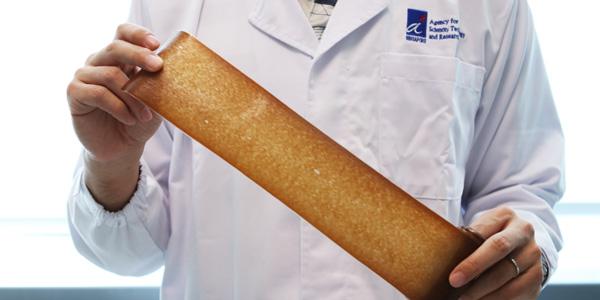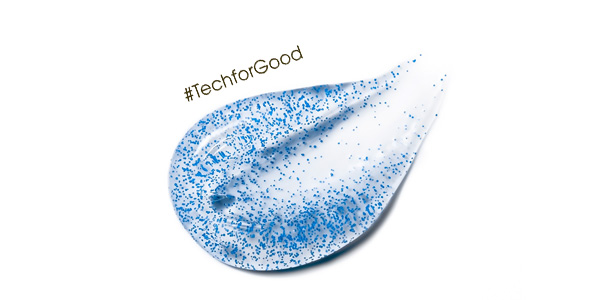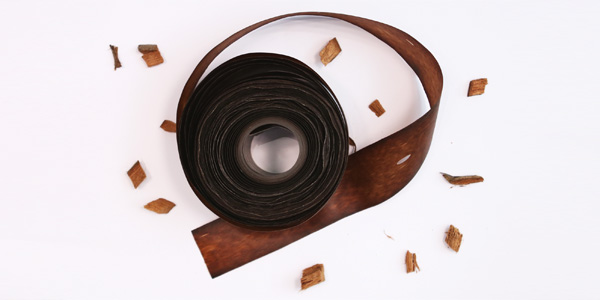INNOVATE
Biodegradable plastics - is that possible?
More than 50% of synthetic plastic produced worldwide gets discarded- filling our landfills and oceans with non-degradable plastic waste. Here are some ways how bioplastics can help reverse this alarming phenomenon.

An environmentalist measuring pollution at the landfill.
4-900 million metric tons. Or about 1 million elephants. That’s how much plastic trash we have accumulated in the last 50 years.
Out of the 8-300 million metric tons of plastic produced- only less than 15 percent gets recycled – with the rest ending up as non-degradable trash.
The effect of plastic waste on the environment is well-documented. It kills marine wildlife- pollutes our soil- and is detrimental to human health.
Current efforts to reduce plastic waste focus on reducing single-use plastic- such as the anti-straw movement. But what if we can come up with a sustainable alternative to plastic?
Dr. Loh Xian Jun- research scientist at A*STAR’s Institute of Materials Research and Engineering (IMRE)- is one of three researchers in Asia who specialises in biodegradable plastic (bioplastic) alternatives.
For years- he and his team have been searching for this ‘holy grail’ – a natural material that can replace commercial plastic. The answer- they found- may lie with our trees.
Is lignin the holy grail?

Most of us know that plant cell walls are made up of cellulose. What we do not realise is that lignin is actually what provides shape and support- as well as channels nutrients in plants. It effectively acts as the ‘blood plasma’ of plants. Lignin is also the second most abundant organic compound found in plants after cellulose.
Lignin is also cheap to obtain- at about S$500 per ton. However- despite its abundance- lignin is not as widely used as cellulose- other than as flammable material or organic waste. Dr. Loh and his team did some research on lignin – and the results that they obtained surprised them.
Biodegradable microbeads in cosmetics – is that possible?
Lignin can be made into biodegradable microbeads in cosmetic products- to replace their non-biodegradable plastic counterparts- such as polyethylene- polypropylene and polyacrylate.
Lignin is malleable – we have the technology that can alter the size of lignin molecules- which can then suit different formulas used in cosmetic products. We’re also in the process of designing lignin microbeads which are biodegradable. They can replace the current plastic microbeads which are dangerous to marine life
Dr. Kai Dan- an IMRE researcher in Dr. Loh’s team.
“We also found that lignin had anti-UV and SPF-boosting properties. When we incorporated lignin into an existing sunscreen- it boosted the SPF factor of the sunscreen from SPF15 to SPF40. It also further enhanced the moisturising effect of the sunscreen-” Dr. Kai explained.
 Facial scrub with microbeads
Facial scrub with microbeadsEco-friendly plastic packaging?
Besides strengthening cosmetic formulas- lignin can also be used to strengthen polylactic acid (PLA) – a bioplastic derived from renewable resources such as corn starch or sugar cane – to develop plastic packaging. “PLA is more brittle and can’t withstand high temperatures like normal non-biodegradable plastic does. Adding lignin into PLA strengthens it- which makes it more usable as an eco-friendly packaging for cosmetic products-” Dr. Loh added.
IMRE collaborated with Japanese manufacturer Lion Corporation to develop a biodegradable disinfectant that can be used for detergents and dishwashers. IMRE is also collaborating with Ikeda Spa- a Singapore-based beauty treatment provider- to develop sustainable solutions to cosmetics formulations and packaging.
“Developing lignin as a mainstream cosmetic product takes time – I’ll say- around five years – as it needs to be regulated and approved by drug regulatory bodies before it is commercially allowed to be produced and sold in the market. But as we have already done some groundwork- it may be approved very soon-” Dr. Loh said.
Read more about other eco-friendly technology
Supergelators that remove oil spills up to 55X their weightCoating that prolongs food shelf-life by 50%
Bioplastics can even fight cancer
Bioplastics are not just used in cosmetics. They can also be used to create drug delivery vessels that allows site targeting and controlled release. This will be useful for specific therapies such as gene-based cancer therapy- which is said to be one of the safest cancer treatment methods- with minimal side effects recorded to-date. However- its effectiveness is highly hampered by the lack of suitable gene carriers.
“Current cancer treatment drugs tend to be oily or hydrophobic- so they cannot dissolve in water. Viral therapy has been also tried before but it is a risky method- as leaked viruses can compromise the body’s immune system.” Dr. Li Zibiao- another research scientist in Dr. Loh’s team- explained.
By using bioplastics that can both dissolve in water and biodegrade- treatment genes have a higher chance of being safely delivered to cancer cells.
Shape-changing plastic
Bioplastics have another property – shape memory – that holds promising medical potential for biomedical implants. Dr. Loh and his team found that environmental triggers such as light- temperature or magnetic input can change PLA’s shape – which is even reversible in some cases.
“The shape-memory function of PLA makes it a good candidate for surgical implants. They can be made into a smaller shape- then injected inside the body. When needed- we will expose them to some heat (40 degrees) and they can expand to their intended shape- for instance as vascular stents-” Dr. Li added.
Bioplastics for the win
Plastic is indispensable to modern living. Its hard and non-permeable structure has allowed us to transport and contain materials without spillage or leakage. It has also replaced non-renewable sources such as metals.

The development of multi-purpose green bioplastic materials can help us to continue reaping the useful benefits of plastic without harming the environment. With more widespread adoption of viable bioplastic alternatives such as lignin and PLA- we can perhaps stop and reverse plastic pollution around the globe- and live more sustainable lives in the near future.
Collaborate with A*STAR
Companies interested to collaborate with A*STAR- can email us at: contact@a-star.edu.sgWas the article helpful?
A*STAR celebrates International Women's Day

From groundbreaking discoveries to cutting-edge research, our researchers are empowering the next generation of female science, technology, engineering and mathematics (STEM) leaders.
Get inspired by our #WomeninSTEM
